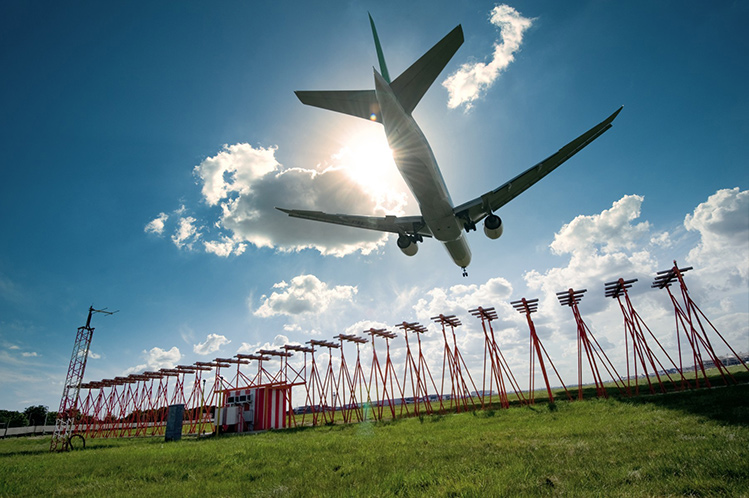The modernisation and digitalisation of Europe’s airspace is essential to ensure better performance and more sustainable operations. As key players in the aviation network, airports have already invested millions of euros to upgrade the European air traffic management system through the deployment of SESAR technologies. Report by Luc Laveyne
Airport operators together with airlines, air navigation services providers and the Network Manager have been investing in the air traffic management (ATM) modernisation since 2014. The deployment of SESAR technology and procedures is currently done in 24 of the biggest airports in Europe. The bottom line was: “We deliver together”. This industry delivery is backed up by a Commission Implementing Regulation (716/2014) and an industry coordination structure – the SESAR Deployment Manager (SDM) – comprised of industry experts who translate what has to be done into a comprehensive plan, the so-called “deployment programme”. Basically, it is a document explaining how the deployment needs to be done. This modus operandi in the SESAR Deployment Manager has created the trust for airport operators to invest. With the support of ACI EUROPE’s SESAR Related Deployment Airport Grouping (SDAG), the necessary funding has been obtained.
Through SESAR technology, the airport industry is delivering automation, digitalisation, enhanced throughput and safety for the benefit of nearly 1 billion passengers. This has resulted in almost 72% completion of the total deployment programme before any implementation end date of a technology has expired. Undoubtedly, it is an extraordinary success. Not only is the deployment programme on track to deliver, but it has also shown that the industry has invested more than expected. More importantly, it has already achieved twice the benefits anticipated by the European Commission and a profitability – Net Present Value (NPV) – that is 20% higher than all projected earnings in the same business case.
The European Commission helped to start and accelerate the deployment of SESAR solutions through the Connecting Europe Facility (CEF) funding, a key EU funding instrument that finances new transport infrastructure projects. Airport operators have benefitted from €189 million from 2014 to 2020 to support the deployment of innovative technologies, thus contributing to the achievement of the Single European Sky objectives. These include the enhancement of airspace capacity, safer and cost-efficient operations and the reduction of the environmental impact of aviation.
The European Commission wants to update and extend the current deployment programme with the implementation of new technologies. It has asked the SESAR Deployment Manager to make a proposal for the period 2021-2027. This proposal was based on the work done in the research and innovation arm of SESAR (SESAR Joint Undertaking) and on important input from the industry, including airport operators themselves. The proposal was sent to the European Commission mid-February 2020.

Depending on the regulatory scope of the competence for airspace, the airport operators may benefit from Performance-based Navigation approaches that reduce the noise burden for a considerable number of citizens.
What is in the new proposal for airport operators?
Depending on the regulatory scope of the competence for airspace, the airport operators may benefit from:
- The integration of the Air Traffic Control Arrival and Departure Management System
- Performance-based Navigation approaches that reduce the noise burden for a considerable number of citizens
- The implementation of the full Airport Operations Plan (AOP) that aims to include performance measurement for airports (and also the Network Manager). This will further improve the overall ATM network performance and lead to passenger-centric synchronised operations, collaboratively decided and implemented by all actors at the airport (airlines, ATC, ground handling, border police, customs, etc.)
- Linking the AOP with the European Commission’s Network Manager in order to provide passengers with up-to-date information from the ATM network situation
- The European Commission’s Network Manager’s work to extend a simplified form of the link with AOP to smaller airports (Estimated Departure Time)
- System Wide Information Management (SWIM), a kind of ATM internet providing the most efficient use of airspace, managing air traffic around weather, and increasing common situational awareness on the ground in order to enhance the passenger experience and achieve sustainable operations.
The SESAR Deployment Manager has also suggested the inclusion of GBAS, the satellite based navigation system, in the deployment programme.
The initial EU Regulation (PCP 716/2014) had in its scope 24 European airports: Amsterdam, Barcelona, Berlin Brandenburg, Brussels, Copenhagen, Dublin, Düsseldorf, Frankfurt, London Heathrow, London Gatwick, London Stansted, Madrid, Manchester, Milan Malpensa, Munich, Nice, Oslo, Palma de Mallorca, Paris CDG, Paris Orly, Rome Fiumicino, Stockholm Arlanda, Vienna, Zurich.
Regarding the Airport Operations Plan, the link between AOP and the Network Operations Plan and SWIM, additional airports are envisaged: Athens, Birmingham, Edinburgh, Geneva, Hamburg, Helsinki, Istanbul, Lisbon, London Luton, Lyon, Malaga, Milan Linate, Prague, Stuttgart and Warsaw.
SDAG is currently making an inventory of where those airports stand when it comes to deployment pre-requisites in order to make a meaningful assessment of their ability to make the necessary investment before the end of 2027.
SDAG is also working on a list of airports where it would be beneficial to deploy GBAS, but this has to be linked with a positive business case. SDAG is additionally preparing a list of airports that could implement the integration to the Air Traffic Control Arrival and Departure Manager. ACI EUROPE will coordinate this work and consult all the airports involved.
The next steps are that the European Commission will collect more information, including the aforementioned proposal for the list(s) of airports to be considered in the deployment programme. European Commission’s stakeholder workshop is foreseen for April 2020. Furthermore, the timeline includes the adoption of the proposal from Member States, a formal consultation led by the European Commission and its entry into force late 2020 or early 2021.
For more information, please contact SDAG on the following email addresses: barbora.smolikova@airportgrouping.org and luc.laveyne@aci-europe.org. You can also visit the SDAG website: https://www.aci-europe.org/aci-europe-airport-grouping.html
Luc Laveyne is Managing Director of ACI EUROPE’s SESAR Related Deployment Airport Grouping (SDAG).







